Introduction
The Internet of Things (IoT) has brought about a significant revolution in various industries, making robust software quality assurance (SQA) practices more important than ever. As IoT devices and systems heavily rely on interconnected hardware, software, and network components, ensuring their reliability, security, and seamless user experience is crucial. This article provides a high-level overview of software quality assurance in the context of IoT, outlining key considerations, challenges, and best practices.
Understanding IoT software quality assurance
Software quality assurance in IoT refers to the processes and activities involved in ensuring the quality, reliability, and performance of software used in IoT systems. It encompasses testing, verification, and validation of the software components, as well as evaluating their interoperability, scalability, security, and reliability within the IoT ecosystem.
The impact of software failures in IoT systems can be severe, leading to compromised security, disrupted operations, and loss of trust among users. SQA plays a critical role in mitigating these risks by ensuring the reliability, security, and user experience of IoT solutions. By implementing effective SQA practices, organizations can identify and resolve issues early in the development cycle, leading to more stable and dependable IoT deployments.
Key considerations for IoT AQL
Key considerations in IoT SQA encompass several important factors. First, interoperability is crucial as IoT devices operate on different protocols and platforms. Therefore, SQA activities should focus on testing compatibility and ensuring seamless communication between devices. Additionally, scalability is vital due to the exponential growth of data in IoT. SQA must evaluate the performance and scalability of IoT systems, ensuring they can handle increasing data loads efficiently while maintaining functionality.
Security is another critical consideration in IoT SQA. Given the potential vulnerabilities, SQA should emphasize assessing and mitigating security risks. This involves implementing measures such as encryption, authentication, and access control mechanisms to safeguard sensitive data and protect IoT devices from unauthorized access. Moreover, reliability is paramount for uninterrupted service. SQA should test fault tolerance, disaster recovery mechanisms, and overall system reliability to minimize downtime and enhance user satisfaction. By addressing these key considerations, organizations can establish a strong foundation for robust and reliable IoT solutions.
Challenges
Challenges in IoT SQA arise from several factors that need to be addressed. Firstly, the diverse range of IoT devices with varying capabilities presents a significant challenge. SQA must develop comprehensive testing strategies and establish robust test environments to ensure compatibility across different operating systems and hardware architectures.
Data management is another challenge in IoT SQA. With vast amounts of data generated by IoT systems, SQA must ensure the integrity and accuracy of this data. Validating processes related to data transmission, storage, and analytics is essential to maintain data reliability and facilitate informed decision-making.
Network connectivity poses a critical challenge for IoT SQA. The reliability of IoT connectivity across various networks is crucial for uninterrupted system operation. SQA should assess the impact of network disruptions on system functionality and establish mechanisms to ensure reliable data transmission in different network conditions.
Furthermore, regulatory compliance is a significant challenge in IoT SQA. IoT systems often operate in regulated industries with specific standards and privacy requirements. SQA should focus on complying with industry-specific regulations and incorporate privacy and data protection measures into the software development process.
By addressing these challenges, organizations can improve the efficiency and reliability of their IoT systems, ensuring compliance, data integrity, network connectivity and device compatibility.
Best practices
Several best practices can enhance IoT Software Quality Assurance. Firstly, test automation, by leveraging automated testing frameworks, enables efficient and scalable SQA processes. Implementing continuous integration and delivery pipelines facilitates early issue detection, improves time-to-market, and enhances overall software quality.
Creating realistic testing environments is another best practice. Simulating real-world scenarios and IoT device interactions allows for comprehensive testing. Emulating diverse network conditions and environmental factors aids in identifying potential issues and optimizing system performance.
Security testing is crucial for mitigating security risks in IoT systems. Conducting vulnerability assessments, penetration testing, and implementing secure coding practices are essential. Regular security audits ensure ongoing security compliance, maintaining a robust security posture.
Performance testing plays a vital role in IoT SQA. It involves assessing the responsiveness, latency, and scalability of IoT systems. Stress testing allows evaluation of how the software handles peak loads and resource usage, enabling optimization for efficient and reliable operation.
By adhering to these best practices, organizations can significantly improve the quality, security, and performance of their IoT software, ensuring a reliable and seamless user experience.
Conclusion
Ensuring software quality assurance in IoT is a complex and critical task due to the interconnectivity and diverse nature of IoT systems. By addressing key considerations, overcoming challenges, and following best practices, organizations can enhance the quality and performance of their IoT software. Robust SQA strategies contribute to improved user experiences, increased trust in IoT technology, and successful deployments of reliable, secure, and efficient IoT solutions. For more detailed information and specific implementation guidelines, further research and exploration of specialized resources is recommended.

